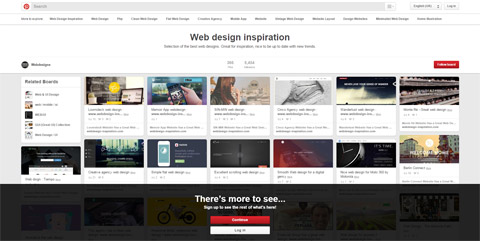Why mobile is so important for local businesses
Google recently asked Neilson Group to study the behaviour of people using mobiles to purchase. You can find the full report here but the main points to take away are these.
People are spending more than 15 hours a week researching potential purchases on their phones with their main method of discovering information being search engines, primarily of course, Google. The research showed that being local is the key with users wanting businesses to be within 5 miles. They also want to make their decision and purchase within an hour.
This is a clear sign that local businesses need to concentrate their attention on mobile users. Responsive design that caters to tablets and phone is no longer the purview of large national businesses. The most important driver in getting a user to your site and to make a purchase is making sure their experience is smooth and engaging. If your website can provide that optimum user experience on a mobile phone you will be well on your way to being ahead of the competition.
If you need help getting your website mobile ready call eSterling on 0121 766 8087.
It’s 2014, shouldn’t your site work on mobile?
Major retailers have made the transition to support mobile devices and there is a growing necessity for smaller brands and businesses to follow suit. In the last week of December John Lewis saw 75% of the traffic to their online shop being made up of tablets and mobile phones. Shoe retailer Schuh found that nearly 70% of traffic came from mobile devices over the same period.
The facts are simple. If you have a website it has to cater to users accessing the site through a tablet or mobile phone. If you don’t you will be loosing business. A website that doesn’t display correctly, is slow, has a Flash intro, or is inconvenient to navigate will dissuade users. Those users will go to a competitor due to the frustrations of trying to use your website. If you sell online then then you practically speaking have little choice but to upgrade the design of your website or face the inevitable decline in sales.
Your first new year’s resolution should be to get a refresh of your site to make it responsive and work across all devices. Why not give eSterling a call and let us see what we can do to increase the sales through your website.
Rap Genius: back in the Google good books
According to Rap Genius they are no longer have an unnatural links penalty from Google after the search engine helpfully gave them assistance to correct their SEO tactics. During the last ten days after the penalty was applied the website couldn’t be found on the first few pages of search results even when their brand name was part of the query. Now they once again appear at the top of search results for their band name although their traffic has not returned to the levels they once enjoyed.
While it is great for Rap Genius to have their penalty lifted the actions of Google arguably show that there is one rule for big brands and another for smaller companies. A ten day manual penalty is a much shorter period of time than a small business could be expected to wait to see a return to search results.
Rap Genius vs. Google
Rap Genius didn’t find the best present from Santa in their stocking when they received a penalty from Google for using link schemes to boost their search rankings. This has resulted in their website not being found on the first page of results for even their own brand name. Instead news stories reporting this and their social media accounts are displayed. A site that saw over half a million unique visits a day has now been reduced to 10% of that showing the enormous power that Google hold in making an online business successful.
The link scheme they were penalised for was asking bloggers to join and affiliate scheme by adding a link to their website in exchange for a ‘thank you’ tweet from Rap Genius. In Google’s eyes even agreeing to exchange a tweet for a link back to a website is considered ‘paying’ for it and falls under “exchanging goods or services for links” which can result in a penalty. A link in a tweet may not have the same value to Google as a link on a website but social media still has an influence on search rankings. For Google this is about the credibility of the search results they provide and need to have these highly visible targets to penalise so as to not encourage link buying behaviour.
Critics argue that the manual penalties that Google applies are not done in a fair way as there are plenty of sites that buy links yet do not get penalised. The consensus is that Google would not be so vocal and stringent about the buying of back links if it didn’t actually work and wasn’t the easiest method to get a higher ranking.
It can be frustrating that behaviour of competitors is overlooked or even tolerated. When your competition is clearly buying links in order to improve their rankings yet do not receive a penalty and you follow Googles best practices and still get a lower position on search results it can be very tempting to follow suite. This is why gaming their SEO would have been a strategy that was seriously considered.
Most agree that Rap Genius has, in their market, the best content and is perceived to be the least spam driven lyrics site on the web. However others suggest that they couldn’t rely upon this to continue having good rankings. While they may have offered a better user experience they didn’t have the number of lyrics that other sites did. In addition while they may have built up an on-site community this would not be as important to ranking in Google as just providing the basic information people look for.
Will Rap Genius be able to return to the top of rankings by cleaning up their site and disavowing those links and will Google be seen to apply their penalties in a fairer way? We will await that news.
Headline writing tips to get more business

Browsers are fickle. If you want to convert a visitor into a customer you need to instantly grab their attention. Beyond eye catching images, bullet points and benefits (not features!) you need to focus on your headlines.
In the world of content strategists and copywriters they call this microcontent and we’re going to show you how to improve yours.
You only get a sentence, that’s 40 to 60 letters, to work with. That’s a lot less that a tweet so every word counts. This kind of text is also displayed usually without context. Sure, it may be displayed with an image but often those are a little generic or abstract. Because of this you have to write a headline that stands on its own.
Here are a few hints on writing that perfect line of text.
Be clear in what your message is.
Your headline has to be appealing. What are you offering? Why does this benefit the customer?
It has to be relevant to both the site and to the reader. Match the headline to the content.
Be credible. Don’t over exaggerate or make claims that simply are not true.
Be sure to “front-load” your headline. That is, putting the most valuable phrase at the beginning.
Use numbers. “10 reasons good headlines improve online sales!”
Use powerful words like “free” and “imagine”.
Try phrasing your headline as a question. “Want to get more business by writing the perfect headline?”
Be succinct. Remove unnecessary words.
Focus on what the customer will find desirable.
“We promise you this: you are now ready to write great headlines”
The State of Search Engine Optimisation in 2013
In the past two years Google cracked open it’s dictionary of animals at page ‘P’ and named the biggest updates to their super-secret search algorithm Panda and Penguin. These two on-going changes fundamentally changed how SEO works by cracking down on any sites that used low quality techniques to gain rankings. While this still effects websites that are not prepared to offer good value to potential customers it leaves others in potential good stead for the future. Achieving the best for your website is now about providing engaging content and high quality links that have been genuinely earned, as it always should have been.
What then should the focus be 2013?
Good SEO is about providing a compelling experience for users of your website. This encapsulates everything from User Experience, having good and relevant content, and well defined navigation and structure. It is no longer possible to do a bare minimum and expect to hit the top of the search engine results. The best search engine optimisation will not help if you have a bad product.
Provide a website that meets people’s needs through researching who your customer base are and what you can offer them above your competition. Your website should be working to your business strategy to provide a service of value to potential customers.
A new year means a fresh start. Talk to eSterling now for a new website that can work for you.
Increasing average order value through your ecommerce store
While Search engine optimisation and Conversion rate optimisation are certainly the two best, and well known techniques for increasing return on investment from your ecommerce site one often overlooked method of maximising revenue is increasing the average value of the orders customers place through your website. By increasing your average order value you can quickly increase your revenue streams without a reliance on the time investments required by traffic generation and improved conversions.
Here are a few ideas you can use on your website.
Free Delivery
Conversion rate experts agree that free delivery is a great method of turning browsers of your ecommerce store into buyers but you don’t have to offer that as an option from the get go. One technique you can employ is to add a free delivery threshold and advertise that fact on your basket and checkout. By using this method you can encourage customers to add more items to their basket in order to “save” money on the delivery. Please don’t see this and other techniques as underhanded or tricking customers. This is simply a way of giving them extra value while encouraging additional purchases.
You might also think about offering free delivery on certain products. This is an especially good idea for seasonal or time limited products.
Upselling
If you have the ability to cross sell items on your website you should use this opportunity to target higher-end products. Related items are often selected when you add your products for the first time and are rarely updated. While you should review and refresh these cross selling items as often as possible there is an opportunity here to use Google Analytics to your advantage. By looking at the various paths take through the website and which categories and products they view most often you can tie products which customers do look at in concert together. Say for example you sell clothing and accessories, through Google Analytics you notice that customers who purchase a certain dress then quite frequently look at shoes. Here is an opportunity to tie those items together as you know they are actually related. This helps customers by giving them genuine items they might want to purchase together without requiring them to browse about the site and not getting the sale.
Bundles
Instead of selling single items you might try to offer product bundles instead. By creating a product that is actually a set of complimentary items you can offer your customers a bargain when they purchase these multiple items together. By bundling items that total £100 for £90 you can increase your average order value where a customer might previously have bought one of the items in the pack for say £30. You might want to label these items “Gift Packs” especially during a seasonal period.
The same idea can be used for multi-packs whereby you offer several of the same product for a reduced price. This might be an easier method to call upon when your ecommerce software does not actively support volume discounts.
Conclusion
Clearly some of these techniques are dependent upon what your ecommerce software can provide but if you need help with expanding upon those facilities or if you are even thinking of updating to a new package eSterling is here to help.
Website design Birmingham
While we have been running the eSterling website and blog for some time we thought it would be handy for new readers and anyone looking at the services we offer to have a short overview of the company.
eSterling is a Birmingham web design agency made up of a team of 20 people covering all aspects of development, support and SEO. We operate as a full service web agency offering web design, web development and search engine optimisation.
We mainly build websites for companies based in the West Midlands. We pride ourselves on producing a bespoke solution that meets the needs of businesses rather than foist a website template solution on them. We won’t hand you a basic template website or an older design with a new logo placed on top. Our team carefully researches your brief, requirements and market you are in and from that creates a tailored web solution just for you. We have over 14 years of experience in the web development industry and guarantee a fresh, jargon free and professional approach to developing your website.
We have provided many hundreds of companies in the Midlands with various categories of web solutions from brochure websites to ecommerce websites. If you are looking to sell products online eSterling have many years of experiencing producing bespoke ecommerce sites. We can provide you with a secure platform with easy to use CMS software that puts you in control of selling goods through your website. Integration with payment services such as SagePay, Worldpay, PayPoint and Worldpay is no issue and we’ll even advise on ways we can help with building support for CRM or Sage accounts into your website.
For a free, no obligation meeting and quote contact eSterling on 0121 766 8087 today.
Pinterest is already proving to drive targeted traffic to e-Commerce retailers
Pinterest is without doubt the new hotness on the interwebs. Similar in concept to other social bookmarking sites like Delicious and Sumbleupon, Pinterest lets you to ‘pin’ images of ‘interest’ you’ve found and comment on the collections of others. Opening the site will give you an appreciation of the service as every space of the screen is filled with all manner of knick knacks and items people have discovered and covet.
What has turned heads is the rate of growth Pinterest is experiencing and the demographics using the site. Pinterest reached a userbase of 10 million unique visitors in the U.S. faster than any site in history. It is also driving more traffic to retail sites than YouTube, Google+ and LinkedIn combined. The site skews towards a female user base and the icing on that cake for savvy ecommerce site owners is that Pinterest generates conversion rates as high as 20%. If your product is pinned to someone’s board there’s a 1 in 5 chance they’ll be purchasing that item.
Pinterest encourages a browsing and discovery orientated approach rather than the specific product searches you’ll encounter throughout most of the web. This mirroring of real-world shopping behaviour is seen in the correlation of pining and offline purchasing which is even stronger than online conversions. If you are an ecommerce site owner then now is the time to get on-board the Pinterest bandwagon. The first item on your agenda should be the addition of a Pinterest button to your site to allow users to easily pin items to their boards. Now would also be an ideal time to get your product imagery in order. Conversion rates have always benefitted from good, large and clear images being used throughout the site but now that they serve as the focal point it is essential you have the best pictures you can.
The next step is establishing yourself on Pinterest. This shouldn’t just be pure self-promotion with all the pins being items from your ecommerce store. Pinterest is about sharing and engaging with the whole community, pinning items from other sources will ingrain a sense of trust in followers. You’ll want to test your site to make sure that items are pinned correctly. Pinterest works by scanning each page to select the image if there are issues you’ll need to get in touch with your sites developers and discuss your options. Also essential is tracking the traffic you are getting from Pinterest through Google Analytics.
Ideas for increasing engagement and conversions through Pinterest can range from having a sale on the most pinned items through to offering a voucher to traffic arriving from the site. You may also want to think about setting up boards that offer a collection of items that go together – think of something along the lines of IKEA display rooms – which serve as a super-sized related items page. Even adding the Pinterest button to your site and an encouragement to pin can help increase the amount of sales you are getting.
Please be aware that not everything is great on Pinterest. It is increasingly being used by scammers pinning items that link to malicious websites but this is activity that Pinterest says it is actively monitoring. Despite this inevitable spamming of the service there are still users coming up with all sorts of creative methods to pin items.
Start Me Up: Tips for Getting Your Big Idea off the Ground
While big in America, start-up culture doesn’t seem to have quite as much traction in the UK. Sure Dragon’s Den gets the viewing figures but it is little more than reality TV panhandling and doesn’t offer any insights into how to get the next Facebook beater off the ground. Here then is a quick guide to how to build your empire from scratch.
First up. What is the problem you are trying to solve? What possible solutions are there? What key metrics do you need to measure to see if what you are doing is a success? What is your unique value proposition? What advantage do you have that cannot easily be replicated? Who are you targeting? What will it cost? How are you going to make money from it?
Solve genuine problems. Don’t just come up with a list of features and don’t just offer a workaround to common problems offer a complete solution. Interview potential customers and find out what their problems are? What would be your solution? Everyone has that one great idea but it’s execution that counts.
Minimize your total time in getting something in front of potential customers. Launch as quickly as possible in fact you need to be even quicker than that. Your first step is your Minimum viable product, MVP in start-up lingo. This is always less than you think. It could be just a one pager with a sign-up form or a blog outlining your big plans. But you need to get something, anything, out there in front of your potential customer base.
Waiting until something is perfect is a recipe for failure. Things will never be just right and you’ll tinker forever over things that are just not important at all. You ain’t gonna need it is a mantra programmers follow and you should too when cutting features from your product. That’s right, you should always be thinking about what to get rid of next rather than what your next great feature is. Less is more. Keep it simple stupid. You need to find the one feature that customers LOVE. You’ll know you’ve found it when they complain that you’ve taken it away.
Iterate rapidly. Launch your MVP. Measure the analytics. Test your assumptions and trust in the data. Make the changes you need, optimise your product and launch again. Rinse. Repeat.
Fail Fast. You need to know if your product is succeeding or failing. This is why it’s essential to iterate and not go with the big up front product that is perfect. If you do and it fails you’ve thrown away months of work. Get the MVP out there and measure. If it fails start over again with the data you’ve got in hand.
Don’t feel guilty about making your product pay to play. It can be a big mistake to offer up all your work for free in the hope that someone might pay for it down the road. By charging money you’re telling people you think it’s worth something. By giving it away you’re telling them it’s not worth anything yet. Maximise your user acquisition, make your current customers happy and they’ll work as your viral marketers. You also did remember to set up your Twitter and Facebook accounts right ?
Don’t let customers get away. If you’ve converted someone through a signup you have their details. Follow up. Send them a personal email asking why your product didn’t meet their needs, what problems they encountered. If it’s viable then consider it for the next iteration.
Once you have found a fit between your product and customers you need to transition to growth and riches! Possibly. If you do make it to be the next Mark Zuckerberg just remember who gave you the advice…







